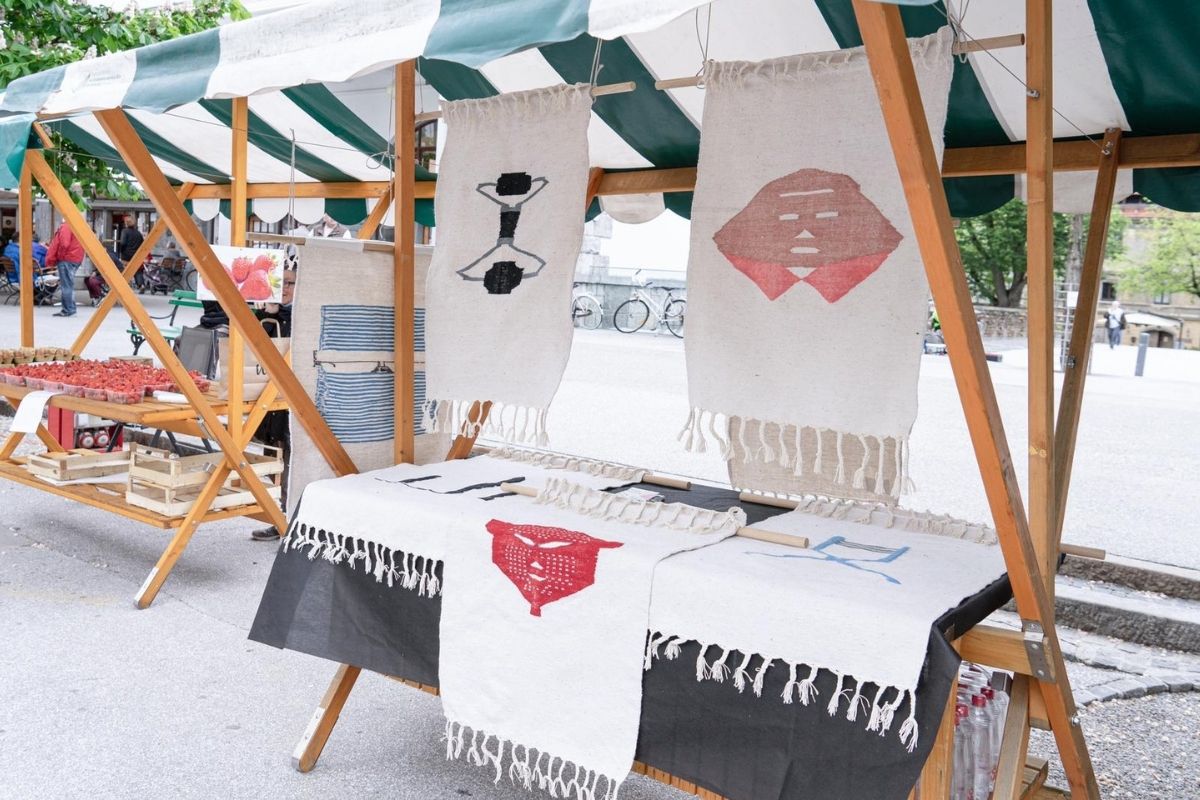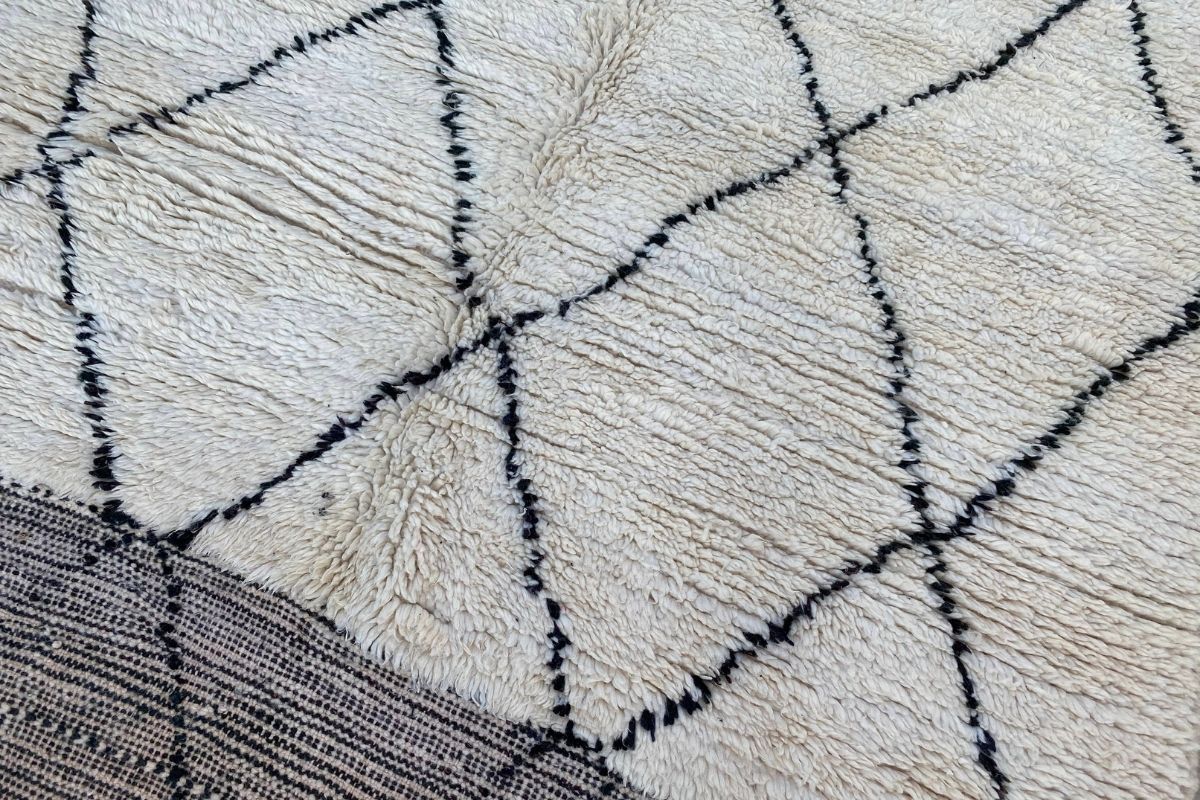Moroccan Boucherouite Rugs
February 1, 2022
Moroccan Boucherouite rugs are known for their bright colors, cotton fibers, and eccentric patterns. In 2010, this unique style of rug made quite a splash in the Western art and design worlds after being featured in an exhibition called “Rags to Richesse” at the Calvin-Morris Gallery in Manhattan. Shortly after, the New York Times published an article called “Wild, Not Woolly, Berber Rugs” about the exhibition, and the trend of decorating with Boucherouite rugs skyrocketed into the ethers.

Unfortunately, what got lost along the rugs' path to notoriety was the incredible history of how this weaving style came to be. The word “boucherouite” is an Arabic phrase used to refer to reusable scraps of various fabrics. In the mid-twentieth century, Moroccan weavers from the Atlas mountain region began using a variety of recycled fabrics, synthetic fibers, and even plastic to weave these durable, one of a kind rugs.
It was the ultimate upcycling success story. Artisans would buy cheap second-hand clothing from the weekly souk, or market. The would then deconstruct the thrifted objects, and weave new designs out of the fibers, cloths, and fabrics.
In this way, the artisans turned contemporary, easily available materials into brightly-colored, fantastical rag rugs for the modern world.
Since Boucherouite rugs are made from recycled materials, the textures and colors vary widely between them. Some rugs feature fibers that are more twisted, almost corkscrewed together. Some fibers are shiny and soft to the touch, most likely from some synthetic fiber. And when the rug is made from scraps of clothing, every once in awhile you find a button, some fragments of a words and a hint at the former life of that piece of clothing before it was turned into a rug.
Often, the design of these rugs is more organic, following the ebbs and flows of the weavers' fancies. The strict geometric and symmetrical designs that you find in other Middle Atlas weavings give way to a more playful and abstract practice with Boucherouites. The result is that each Boucherouite is the unique reflection of the artisan that wove it.
As if there wasn't enough to love about Boucherouites, they're also easier to clean than their wool counterparts. Because most of them are made from cotton, when they get dirty, you can always toss them in the washing machine. We would still recommend washing on delicate and air drying, but at least you can rest assured that the colors won't run and the rug won't shrink.


The ability to easily clean these rugs is an added bonus for homes with kids, pets, or both. Oh, and did we mention kitchens and bathrooms? They also work great there. Because they're often smaller in size and lighter in weight, we would recommend pairing a rug pad with your boucherouite. It'll keep it from floating around the floor and give it a cushier feeling underfoot. Click the link below for our rug pad recommendations.
Rug Pads for Boucherouite rugsSome of our current favorites!
While many of our Boucherouite rugs have sold out already, we still have a few kicking around. Here's the rundown of our favorite pieces and what we love most about them!
Boucherouite runner in shades of teal, orange, and moss green
On this boucherouite, we're most taken by the abstracted diamonds daisy chained through the middle of the runner, outlined in pops of dusty rose and mossy green. This runner, with its secondary color palette sashays into the space with warmth and personality.
A colorful abstract Moroccan Boucherouite throw rug
Notice at the center of this rug, the abstract motifs roughly in the shape of triangles and diamonds. These subtle homages to traditional Moroccan weaving remind us of a line written in an article titled "Ways of Imagination" by Elisabetta Longari. She writes how Boucherouite rugs are "visual displays of reinvented beliefs in traditions [that] seem to assert their strong independence from Western models." In other words, Boucherouite weaving brings its own Moroccan weaving history into the modern world without conforming to Western art standards.
A pink Moroccan Boucherouite with a geometric pattern
It's rare to see a structured pattern on a Boucherouite rug, which makes the neat rows of geometric motifs laid out on this Moroccan rug all the more unique! It's incredible to think that such an orderly pattern emerged from a complete mélange of recycled fibers. This reflects the high level of talent and artistry the rug weavers bring to their work. Elisabetta Longari writes how, "the wisdom inherent in the art of recycling is something that tightly binds the aesthetic dimension together with the ethical one." The development of Boucherouite weaving not only reflects the artistic wisdom of Moroccan weavers, but the practical intellect to adapt to a modern world.
Recent Rug Journal articles
Tina Umer x Kantara Rugs
Follow along as we transform Tina Umer's images into flatweave Moroccan rugs for her art exhibit, "Gone Clicking."
View DetailsClaudia Pearson's Ebb + Flow Rug Revisited
In 2020 we released our first collaborative Kantara x Claudia Pearson rug design. Since then, we released a new version of the Ebb + Flow rug featuring a colorful palette and we have even more rugs in the works!
View DetailsAll about Moroccan Beni Ourain rugs
Known for their minimalist, geometric patterns, neutral colors, and soft wool feel, the Beni Ourain rugs are some of the most popular types of Moroccan rugs.
View Details









